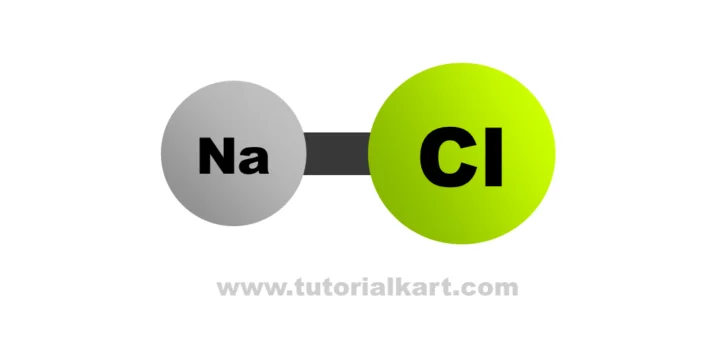Answer: The chemical formula of sodium chloride is NaCl.
Sodium Chloride Formula
Sodium chloride (NaCl) is composed of sodium (Na) and chlorine (Cl) atoms. It forms through the ionic bonding of these two elements, where sodium loses one electron to form a Na+ ion, and chlorine gains one electron to form a Cl– ion. This ionic bond creates the stable compound NaCl, commonly known as table salt.
Structure of Sodium Chloride
The formula for sodium chloride, NaCl, indicates that it is composed of one sodium (Na) ion and one chloride (Cl) ion.

In its solid state, sodium chloride forms a crystalline lattice structure in which each sodium ion is surrounded by six chloride ions and vice versa. This ionic arrangement gives salt its characteristic cubic shape.
The Na+ ion and Cl– ion are held together by electrostatic forces of attraction, known as ionic bonds. Sodium (Na) loses one electron to form a positively charged Na+ ion, and chlorine (Cl) gains that electron to form a negatively charged Cl– ion, resulting in the stable NaCl compound.
Ionic Bonding in Sodium Chloride
The formula NaCl reflects the ionic bond between sodium and chlorine. Sodium, a metal, donates one electron to chlorine, a non-metal, resulting in the formation of Na+ and Cl– ions. These oppositely charged ions are held together by electrostatic forces, forming the ionic compound NaCl.
Conclusion
The formula of sodium chloride (NaCl) represents a simple ionic compound formed by the bonding of sodium (Na) and chlorine (Cl).
